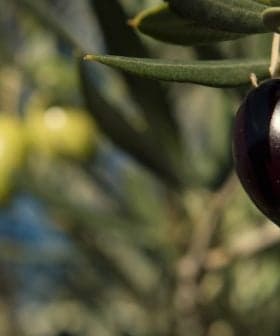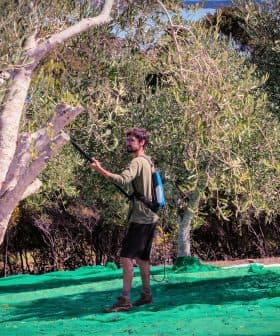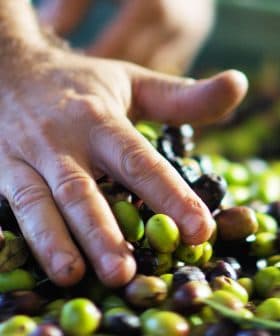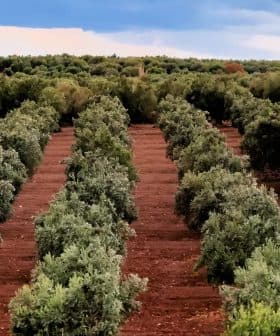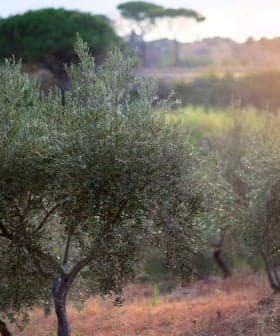Australia, New Zealand Draft New Olive Oil Standards
Australia and New Zealand are considering adopting new stringent olive oil labeling rules that would define each class of olive oil and set a free acidity benchmark of 0.8% for extra virgin olive oil. The draft standard also aims to simplify and clarify labeling to avoid misleading terms, with public comment on the standard open until February 25. These new standards come after studies revealed widespread mislabeling of olive oils, with the goal of ensuring that labeling accurately reflects the characteristics of the oils being sold in the two countries.
By Sarah Schwager
Olive Oil Times Contributor | Reporting from Buenos Aires
Australia and New Zealand look set to adopt new standards that establish stringent olive oil labeling rules in a move that is also likely to affect imports into the countries.
In a copy of a draft of the new olive oil and olive-pomace oil standards obtained by Olive Oil Times, which were quietly released to the local industry on Christmas Eve, the two countries have clearly and strictly defined each class of olive oil.
If put into effect the new standards would adopt the internationally-recognized free acidity benchmark of 0.8% for extra virgin olive oil, which some experts see as too high and unambitious for olive oil’s most prestigious grade.
The permitted designations for the labeling of edible natural olive oils, refined olive oils and olive-pomace oils are: Extra Virgin Olive Oil, Virgin Olive Oil, Refined Olive Oil, Refined Olive Oil Blend, Refined Olive-Pomace Oil, and Refined Olive-Pomace Oil Blend. Any other designations (e.g. Olive Oil, Pure Olive Oil, Light or Lite Olive Oil, Extra Light or Lite Olive Oil) “are expressly forbidden,” the draft standard states.
The draft standard also makes it clear that the new rules would be applied to all grades of olive oil and olive-pomace oil traded in Australia and New Zealand, not just those produced within the island nations.
The new standards come on the heels of the adoption in the United States of a new set of guidelines, and after a number of high profile studies revealed the widespread mislabeling of olive oils. In a test by Australian consumer group Choice last June, it was discovered that half of 28 brands ofextra virgin olive oil sold in Australian supermarkets did not meet International Olive Council (IOC) standards for extra virgin olive oil classification.
There is currently no mandatory standard for olive oil sold in Australia.
The draft standard also sets guidelines to provide for simpler and clearer labeling to avoid misleading and confusing terms. No adjective of any kind (e.g. Premium, Super, Light, Lite, Pure) is permitted if it is presented on the same line as, or of equal or greater prominence than, the approved designation on the label.
“Words describing country or region of origin (e.g. Australian, Tuscan, Spanish, etc.), oil character (e.g. mellow, fruity, robust, etc.), and/or processing method (e.g. cold pressed, first extraction, etc.) may only be used where the information can be substantiated and does not mislead consumers.”
The best-before date must be declared and supported by technical evidence. A date greater than two years from the date of bottling cannot be displayed.
The words ‘first cold pressing’, ‘cold pressing’ or similar may appear only for virgin or extra virgin olive oils obtained from a first mechanical pressing of the olive paste by a traditional extraction system using hydraulic presses. Those obtained with equipment other than hydraulic presses cannot be labeled with the words ‘pressing’, ‘pressed’ or similar.
Likewise, ‘cold extraction’, ‘cold crushed’ or similar can only be used for virgin or extra virgin olive oils obtained by percolation or centrifugation of the olive paste, and must include specific storage conditions necessary to ensure the validity of the best-before date declared on the label.
“Indications shown on the labeling shall not mislead the purchaser, particularly as to the characteristics of the oil concerned, or by attributing to it properties which it does not possess, or by suggesting that it possesses special characteristics where those characteristics are common to most oils,” the draft standard states.
“This Standard recognizes that olive oil is a natural product and regularly presents variation in its chemical composition. All limits in this Standard have been established to accommodate the most common natural variations, particularly in Australia and New Zealand olive oils, without compromising the ability to detect adulteration.”
The draft standard is available for public comment until February 25.
The characteristics of each of the oils are:
Natural olive oils
Extra Virgin Olive Oil: natural olive oil with a free acidity, expressed as free oleic acid, of no more than 0.8 grams per 100 grams and a median of defects equal to 0;
Virgin olive oil: natural olive oil with a free acidity of no more than 2.0 grams per 100 grams and a median of defects equal or less than 2.5;
Lampante olive oil: natural olive oil with a free acidity of more than 2.0 grams per 100 grams and/or a median of defects higher than 2.5;
Refined olive oils
Refined olive oil: olive oil obtained from natural oils by refining methods that do not lead to alterations in the initial glyceridic structure with a free acidity of no more than 0.3 grams per 100 grams;
Refined olive oil blend: blend of refined olive oil and natural olive oils fit for human consumption, with a free acidity of no more than 0.6 grams per 100 grams and a median of defects equal or less than 2.5;
Olive-pomace oils
Crude olive-pomace oil: intended for refining for use for human consumption or for technical use;
Refined olive-pomace oil: obtained from crude olive-pomace oil by refining methods which do not lead to alterations in the initial glyceridic structure, with a free acidity of no more than 0.3 grams per 100 grams;
Refined olive-pomace oil blend: a blend of refined olive-pomace oil and natural olive oils fit for human consumption, with a free acidity of no more than 0.6 grams per 100 grams and a median of defects equal to or less than 2.5.
This is a breaking news article. Check back for updates.



